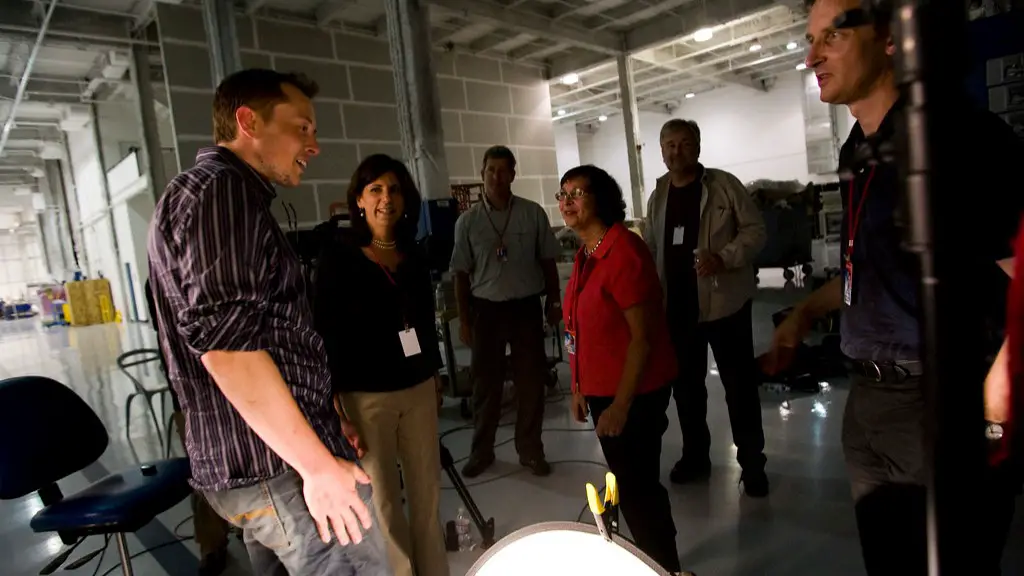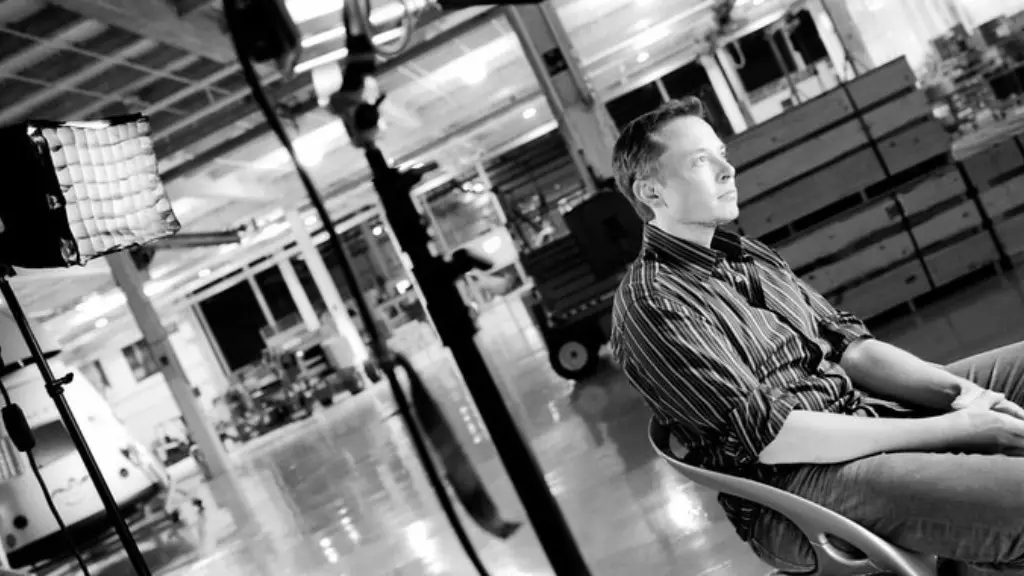Current Position of Elon Musk Satellites
Elon Musk’s venture into the field of space technology continues to progress on multiple fronts. His fleet of satellites, known as the Starlink constellation, are currently operating and transmitting the internet over select global regions. The size of the Starlink constellation is quickly expanding and it is projected to contain up to 12,000 spacecraft in the years to come. Currently, there are close to 1,000 satellites in orbit and a total of 35 launches have been completed, while the future is set to hold even more ambitious goals set by Elon Musk.
Starlink satellites are smaller than conventional satellites, with most of the units being the size of a standard refrigerator. Their on-board propulsion system helps to keep them in their required orbits, ensuring their cost of maintenance is relatively low. On the down side, their small size means that more satellite launches are necessary in order to achieve the same coverage as other communication systems. Starlink’s transmission speed is extremely fast, with speeds of up to 150 Mbps reported from ground stations, and the ultimate aim is to be able to provide high-speed internet to even the most remote areas of the world.
Key Benefits of Elon Musk Satellites
The goal of providing high-speed data connection to people across the world, who would traditionally have no access to the internet, can be seen as the driving force behind the project. The introduction of affordable internet access in rural areas and developing countries can have wide-reaching and transformative effects on both national and global economies. This can be especially true in highly data-dependent countries such as India, where it is currently estimated that around 60% of the population live without access to the internet and mobile broadband services.
For Elon Musk and his team, the aim is to provide a disruptive, albeit risky, solution to this problem. The ability to leapfrog existing infrastructure and networks could lead to rapid progress in terms of overall internet access in the world. Additionally, the introduction of low-cost internet services could help to spur on the development of new start-ups and businesses, who can benefit from the newfound access to online opportunities.
Challenges Facing Starlink
Fears over the risk of a collision between satellites, as well as the potential impacts of radio-wave pollution on astronomy, observatories and other activities, has led to some concern among environmental groups. The unregulated nature of the project, along with its risk of disruption to existing services, has also raised some eyebrows.
One challenge facing Starlink is whether the space-based system is able to provide the same quality and reliability as offered by terrestrial providers, such as fibre-optic cables. Additionally, although the launch of so many satellites has been met with enthusiasm from some corners of the industry, the system is largely unregulated. This means that standards of performance and reliability are yet to be set and that operators are unable to guarantee the service to their customers.
Regulatory Challenges Facing Elon Musk Satellites
The regulatory environment for satellite-based systems is quickly changing, with many overseeing bodies and organizations currently in the process of making new regulations and commissions. This is a welcome process and will help to ensure that the industry is able to operate safely and effectively. As part of the process, the Federal Communications Commission (FCC) has already approved the launches of thousands of satellites in the past year and a half and has supported the operation of the Starlink constellation.
The FCC recognizes the potential of these types of projects and understands that they are essential to bridging the digital divide across the globe. It is yet to be seen however, whether the national governments of the world will be willing to support the development of large-scale internet-providing networks in their countries. With this in mind, any rules and regulations set forward by the FCC are likely to play an important role in determining the success of Elon Musk’s venture into space.
Expanding Usage Areas of Elon Musk Satellites
Starlink’s applications are not limited to just providing internet services. The constellation of satellites can also be used for applications such as remote sensing and mapping, which are becoming an increasingly important part of our world. Elon Musk’s venture also has potential applications for military operations, where satellites can provide secure communications for troops and personnel in difficult to reach locales.
The future of the technology is looking bright, with reports from SpaceX indicating that the satellite network could be ready for commercial service as early as 2021. In addition to this, the constellation could be fully operational, with up to 12,000 satellites in orbit, by 2024.
Starlink’s Impact on Satellite Industry
The launch of the Starlink satellite constellation has had a significant impact on the global satellite industry. With its ambitious goal of providing access to internet services in even the most remote of areas, its activities have been monitored closely by competitors and onlookers alike.
The impact of Starlink is not just limited to established players in the field, but has also opened up opportunities for start-ups and small businesses who are looking to leverage its services in order to provide data solutions to underserved populations. These smaller companies exist in a highly competitive and resource-intensive industry which, in many cases, can be prohibitively expensive to enter.
Large-scale Applications of Elon Musk Satellites
The potential of the Starlink constellation isn’t just limited to providing internet access to people across the world, but also holds the potential for large-scale applications such as providing global coverage of natural disasters, communication for remote locations, and even bringing internet access to aircraft.
The potential for Starlink and its applications has been recognised by a number of organisations, and its coverage has been praised for its potential to help reduce the digital divide across the globe and provide reliable and affordable internet access to the most remote parts of the world.
Impending Cost Challenges for Starlink
Although the current Starlink satellite constellation offers a wealth of benefits, one significant challenge lies in the economics of the venture. The project is not a cheap one, with estimated total costs hitting $10 billion. This brings Starlink firmly in line with conventional satellite internet projects and comes with a significant number of hurdles, including whether the model can be economically viable in the long-term.
Additional costs are incurred with the ongoing launching and maintenance of the satellites which, while necessary, could prove to be a significant impediment to the success of the venture if the prices become too high. It is also unknown whether the project can attract a sufficient enough customer base who will be willing to pay for access to the services. With large companies such as Amazon, Facebook and Google all competing in the sector, this could prove to be a major challenge for Starlink.
Starlink’s Financing and Monetization Models
Presently, Starlink is funded primarily through a mix of equity and debt financing from venture capital sources, as well as from the limited resources of SpaceX. This meagre backing is paired with the high cost of launching satellites and the uncertainty that remains around revenue from the venture; this makes the project a risky one.
Starlink is anticipated to bring in significant revenue from the provision of internet services, as well as through various other avenues, such as providing data and services to military personnel, communication services, and by enabling high-precision remote sensing. Ultimately, these revenue streams will determine the success of the project, but they are yet to be tested.
Recent Developments in Elon Musk’s Satellite Project
The successful launching and operationalisation of the fleet of satellites has acted as a milestone in the project’s progress, but it is merely the beginning. The development of this groundbreaking technology continues, as does demand for increased coverage and more satellites being sent into space.
At present, the focus is on optimising the system’s performance and reliability, as well as on developing new applications for the system. Additionally, SpaceX is in the process of filing lawsuits in order to gain permission from the US government to launch an additional 30,000 satellites in low Earth orbit, a move that would expand the reach of the technology and offer improved data rates to targeted areas across the globe.


